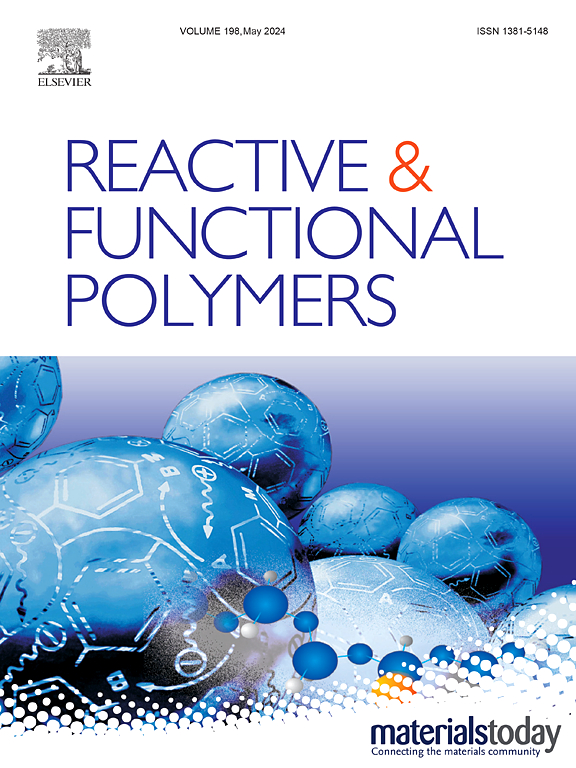Reprocessable epoxy-acrylate 3D-printing resins with improved compatibility
IF 5.1
3区 工程技术
Q1 CHEMISTRY, APPLIED
引用次数: 0
Abstract
In this work, a practical approach is described to prepare acrylate-epoxy photo-thermal (dual) curing DLP 3-D printing resins that are reprocessable through transesterification. By choosing to perform the thermal cure before or after the photocure, the intermediate, partially-cured material can be obtained in different conditions, offering great flexibility for processing. The polyacrylate and polyepoxide phases are compatibilized by methacrylate-functional carboxylic acids that are initially added to the liquid resin. By employing methacrylate precursors with different chain lengths in the preparation of these coupling agents (CA), the final materials are obtained either as elastomeric or glassy solids. The glass transition temperatures ranged from 5 °C up to 100 °C and Young's moduli ranged from 13 MPa up to 2 GPa. The dynamic behavior was dictated by the choice of the anhydride precursor such that CAs prepared using glutaric anhydride lead to stress relaxation which was an order of magnitude faster than formulations prepared with bulkier anhydrides such as hexahydro-4-methyl phthalic anhydride. The Arrhenius activation energy of relaxation were in the range 90–120 kJ/mol typical of beta-hydroxyester vitrimers. The hot-press reprocessed materials showed near-complete or virtually complete recovery of and . Malleability performance of the materials was either good or excellent.

可再加工环氧丙烯酸酯3d打印树脂与改进的兼容性
在这项工作中,描述了一种实用的方法来制备丙烯酸酯-环氧树脂光热(双)固化DLP 3d打印树脂,该树脂可通过酯交换反应再加工。通过选择在光固化之前或之后进行热固化,可以在不同的条件下获得中间,部分固化的材料,为加工提供了很大的灵活性。聚丙烯酸酯相和聚氧化物相被甲基丙烯酸酯-功能羧酸相容,这些羧酸最初被添加到液体树脂中。通过采用不同链长的甲基丙烯酸酯前驱体制备这些偶联剂(CA),最终得到的材料要么是弹性体,要么是玻璃状固体。玻璃化转变温度Tg范围从5℃到100℃,杨氏模量范围从13 MPa到2 GPa。动力学行为取决于酸酐前体的选择,例如用戊二酸酐制备的CAs导致应力松弛,其速度比用体积较大的酸酐(如六氢-4-甲基邻苯二酸酐)制备的CAs快一个数量级。弛豫的阿伦尼乌斯活化能在90 ~ 120 kJ/mol范围内。热压再加工材料的Tg和e几乎完全或几乎完全恢复,材料的延展性表现为良好或优异。
本文章由计算机程序翻译,如有差异,请以英文原文为准。
求助全文
约1分钟内获得全文
求助全文
来源期刊

Reactive & Functional Polymers
工程技术-高分子科学
CiteScore
8.90
自引率
5.90%
发文量
259
审稿时长
27 days
期刊介绍:
Reactive & Functional Polymers provides a forum to disseminate original ideas, concepts and developments in the science and technology of polymers with functional groups, which impart specific chemical reactivity or physical, chemical, structural, biological, and pharmacological functionality. The scope covers organic polymers, acting for instance as reagents, catalysts, templates, ion-exchangers, selective sorbents, chelating or antimicrobial agents, drug carriers, sensors, membranes, and hydrogels. This also includes reactive cross-linkable prepolymers and high-performance thermosetting polymers, natural or degradable polymers, conducting polymers, and porous polymers.
Original research articles must contain thorough molecular and material characterization data on synthesis of the above polymers in combination with their applications. Applications include but are not limited to catalysis, water or effluent treatment, separations and recovery, electronics and information storage, energy conversion, encapsulation, or adhesion.
 求助内容:
求助内容: 应助结果提醒方式:
应助结果提醒方式:


